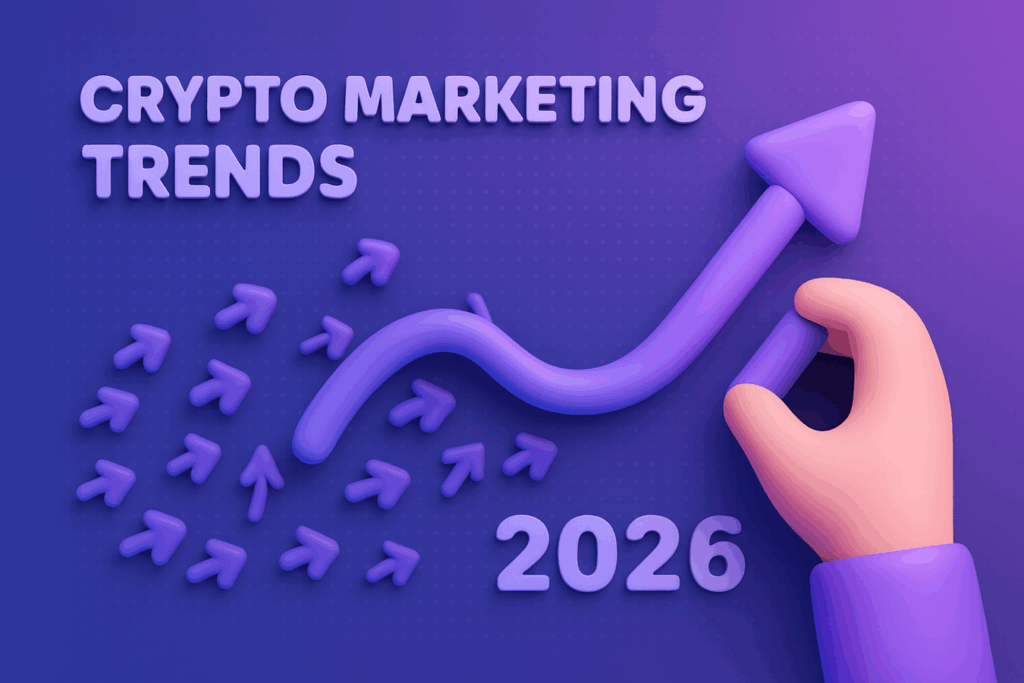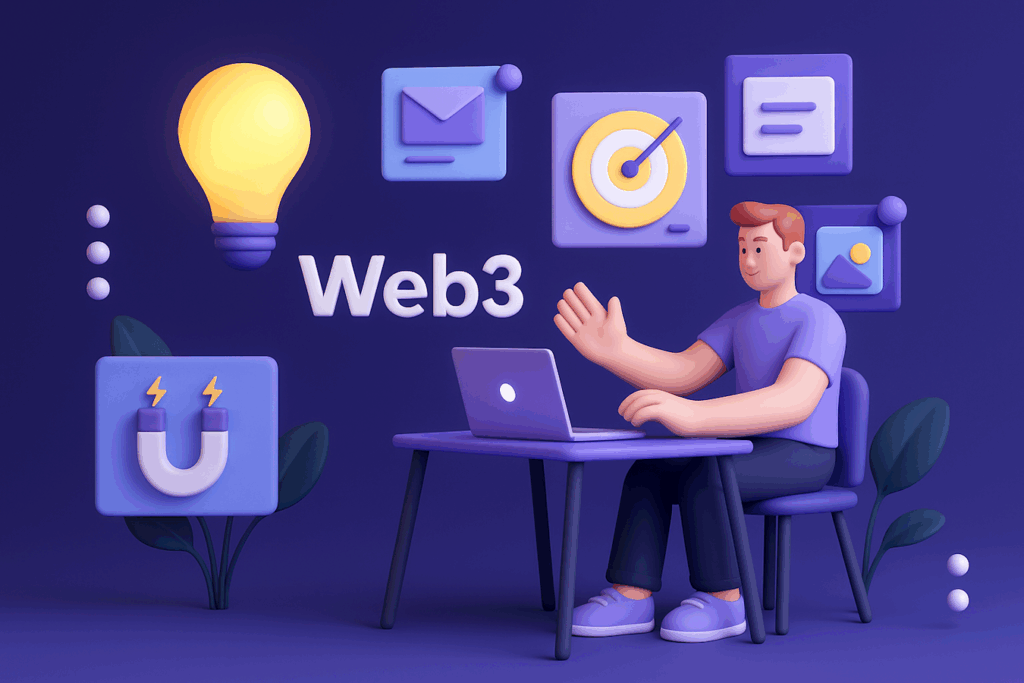share
The Evolution of the Internet
The Internet has gone through several stages of evolution since its creation. Static web pages ruled the day in Web1. In addition to providing news and information, some websites allow users to showcase their interests and hobbies. Moreover, to save bandwidth, images and videos were discouraged in Web1.
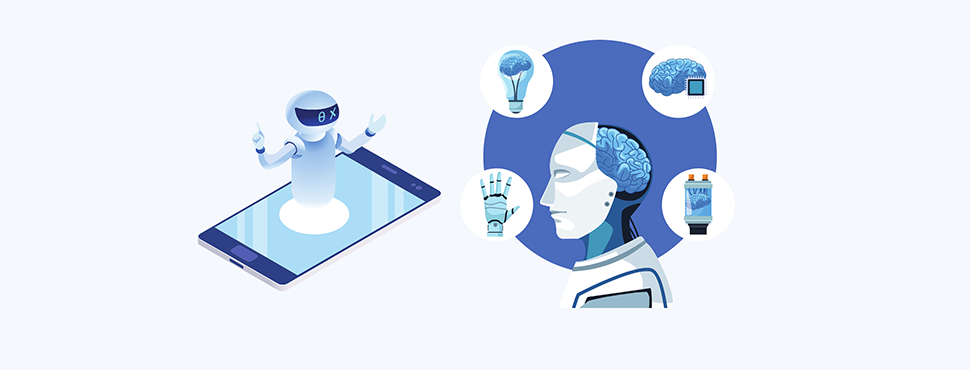
As the twenty-first century began, Web1 transformed into Web2, a more dynamic, customizable, and user-driven Internet. Websites began to become more interactive. In Web2, images and video no longer slowed down websites, and we began sharing them in a matter of a few clicks. And now, it’s time for Web2 to pave the way for a new and intelligent Web3.
What Is Web3?
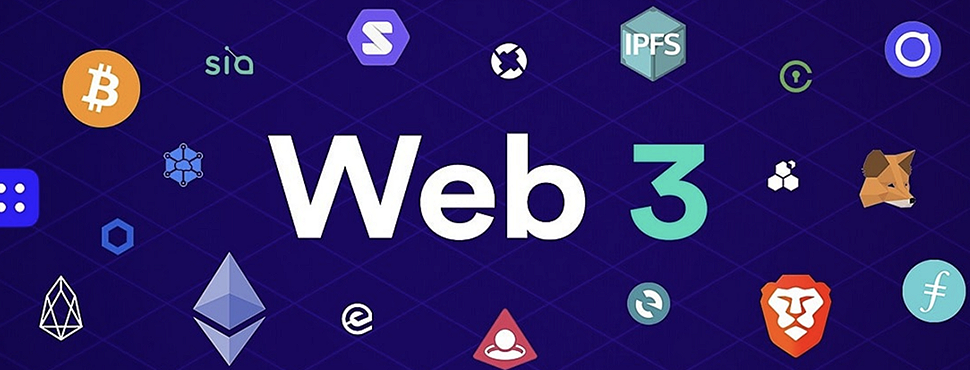
Web 3 is the next stage in the evolution of Internet technologies, which uses blockchain technology and other decentralization tools introduced in Web 2.0. It should be noted that no one has an absolutely accurate idea of how the Web 3 stage will develop in the future and what kind of development vector will be laid in it.
However, the main criteria of Web 3 are already known. These are openness, decentralization, and free Internet, which will definitely become a more solid base and a round of growth for the development of cryptocurrencies.
Key Features of Web 3

Decentralization, openness, and interactive user experience on the Internet are key features of Web 3. In addition, the Semantic Web is a key foundation of Web 3 and plays an important role in improving SEO and digital marketing strategies for businesses. It interprets and understands the context of information or data to provide the most accurate and relevant search experience for end users in Web 3.
To date, only large companies such as Google, Microsoft, and Facebook are profiting from user data, but Web 3 will allow everyone to get paid for their data and time online.
This means that users on the Internet will be able to sell their data while maintaining privacy, security, and ownership. In addition, the third generation of the Internet provides a more interactive and enjoyable user experience through more meaningful use of data.
What Is Web3 Marketing?

Web3 marketing is the future of online marketing and will be integral in providing users with a seamless experience tailored to their preferences and location. It can be defined as a way of using web applications that connect users with information based on the relevancy that they are looking for.
Companies like Twitter, Facebook, and Google are already utilizing Web3 technologies in order to give users the best possible experience when using their services. It’s only a matter of time before other companies begin following suit.
It has provided marketers with new opportunities when it comes to advertising that is more interactive and aimed at creating a more personalized experience for each visitor while also giving their target audiences exactly what they’re looking for within seconds.
Web3 is already taking over how we use the Internet in some ways, but in the next 5-10 years, it will be a major part of our daily lives.
How Web3 Will Help in Marketing
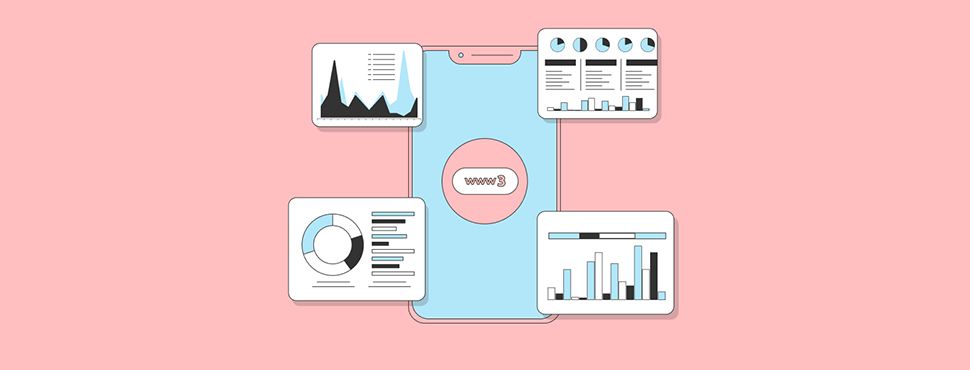
We understand that Web3 marketing can be overwhelming, especially if you’re new to the industry. To help you prepare for this bold new digital age, here we’ll explain what the Metaverse and Web3 are and what marketing skills you’ll need to succeed.
The Metaverse and Web3 are already here and will likely change the way we market. Read on to find out how we got to Web3 and our five predictions of change that will shake the world of marketers around the world. Let’s try to understand how Web3 will change the way marketing works.
This next evolution of the Internet will create a space where people can drive and go anywhere in the world without being limited to a desktop or mobile device. Web3 will take virtual communities and social connections to the next level, as well as provide users with more power and autonomy than its current iteration.
Web3 will allow marketers to access data about their audiences on social networks such as Facebook, Twitter, and Instagram, and the end user will have more control over access to this information.
Web3 marketing is the future of online marketing and will be critical to providing users with a great experience tailored to their preferences and location.
The main drivers of Web3 marketing include browsing habits, browsing practices, more effective information, the experience we seek, and the openness of the web.

Web3 marketing isn’t just evolving. It revolutionizes the way we think about the Internet. Well, before we dive into why Web3 applies to marketing, we need to understand what it is.
Web3 marketing has given marketers new options when it comes to more interactive and targeted advertising to create a more personalized experience for every visitor, offering the target audience exactly what they are looking for in seconds.
To be fair, the role of blockchain technology in Web3 marketing is helping it become more efficient and transparent. The decentralized nature of blockchain technology helps make Web3 marketing more transparent and nearly tamper-proof.
Web3 presents a great opportunity for advertisers to go back to basics and engage directly with users, delivering real value and experience. Mastering immersive marketing techniques, tools, and platforms will prove crucial in Web3 and the Metaverse.
As we enter an era where the Internet is becoming less centralized and big players no longer have an exclusive monopoly on the World Wide Web, developing your content marketing skills is critical.
As we go through a massive paradigm shift that increases the security, connectivity, immersion, and personal ownership of the World Wide Web, it is critical to improve your digital marketing skills to meet the needs of your audience in this rapidly changing world.
Web3 Is Changing the Way We Do Digital Marketing

Marketing is the process of using online channels to promote and sell products or services. It has become increasingly important in recent years as more and more people spend time online.
With the rise of Web3, digital marketing is changing. In a Web3 world, there would be no need for centralized platforms like Facebook or Google, as users would be able to interact directly with each other without these intermediaries. This would create a more decentralized and democratic Internet, where users are in control of their own data.
In addition, the use of blockchain technology can help to ensure that data is more secure and cannot be tampered with. This could have a major impact on digital marketing, as it would make it more difficult for companies to collect and use data for marketing purposes.
The development of Web3 is still in its early stages, but it is already having an impact on digital marketing. This change is likely to continue as more projects are developed that build on the infrastructure of this new Internet.
How to Bring Your Business Into the World of Web3 Marketing

Here are a few ways for marketers to step into the world of Web3 marketing.
Enter the Metaverse
The digital world is now all abuzz with the Metaverse. The Metaverse refers to the creation of shared, 3D virtual spaces that are linked to a virtual universe, where users can travel across virtual spaces, interact and communicate with their own virtual identities.
The Metaverse is ideally positioned to revolutionize events, exhibitions, and conferences, with many businesses organizing virtual events with interactive and immersive 3D experiences. Holding events in the metaverse can help boost your audience’s curiosity and provide more room for creativity.
Create Decentralized Applications

Decentralized applications, or Dapps, are applications built on a decentralized network that combines a smart contract and a front-end user interface. Decentralized applications come with many benefits – Dapps come with more secure user privacy as you do not need to provide real-world identity.
Furthermore, there is more freedom and flexibility with the lack of censorship, as it isn’t controlled by a single entity on the network, which blocks users from submitting transactions and deploying Dapps. Businesses can utilize Dapps to create their own unique and creative content.
Virtual Commerce
Virtual commerce or virtual selling is the collection of processes and technologies where selling and buying are conducted remotely. To make it simple, virtual selling is any aspect of the sales process in which the traditional in-person part has been replaced by online technologies.
Virtual selling helps sales reps to overcome various challenges when it comes to traditional sales and provides a wider platform and target audience. Through virtual selling, stakeholders can be brought together regardless of where they are through virtual conferencing tools.
A virtual approach also helps with dealing with the tight schedules of decision-makers. Digital marketing goes hand-in-hand with virtual selling, helping to grab the audience’s attention and providing useful behavioral insights.
Use Coins Creators to Reward Customers and Creators
Creator coins are social tokens that allow creators, influencers, musicians, and more to launch their own cryptocurrencies to monetize and multiply their audience. Creator Coins help to move creators who offer digital products and services closer to each other, giving the creators and their followers a win-win situation.
Creators can be as imaginative as they want with what they offer in exchange for their social tokens. This is an unmatchable way of building a new marketplace around your brand while engaging with your community in a more meaningful and valuable way.

Publish Limited Edition Content
Consider publishing your own limited edition content with new unique ideas. Instead of an E-book that anyone can own, create a limited edition NFT version of that content (or entirely new content) with extra goodies (video, interviews, a podcast episode, whatever).
People can collect them (using money or your brand coins), trade them or sell them. People who collect a whole series might get extra goodies: invitations, product features, and new content.
Pay People to Consume Your Content
Audiences are always motivated by incentives, so why not utilize new technologies to reward them for their time and loyalty? You can reward them for downloading your content, finishing it, or completing milestones.
The rewards can be in Bitcoin, any altcoin or stablecoin, your own brand coin, NFT, or a token as yet unimagined. It is one of the best Web3 marketing strategies to try in order to expand your business.
The Future of Marketing Has Just Begun
Web 3 offers advertisers a wonderful opportunity to get back to fundamentals and engage directly with users while providing actual value and experiences. With Web 3, we can expect a complete makeover of how we use the web and how we do business online.
There is no doubt that there are flaws in how various Web3 features are being adopted right now. Still, there is also a lot of optimism that the issues of Web 2.0 can be rectified with the next phase of the Internet, which makes it worth paying attention to, even if it causes its own issues in the process.

To Sum It Up
When Web 3 inevitably arrives, the Internet will become exponentially more integrated into our daily lives.
We will see how almost all modern machines that usually work offline, from household appliances such as ovens, vacuum cleaners, and refrigerators to all forms of transport, will become part of the IoT economy, interacting with its offline servers and decentralized applications (DApps), developing new digital realms such as blockchain and digital assets to power many of the new technological wonders of the 21st century.
Web3 offers an excellent opportunity to directly build meaningful relations with users by providing better experiences and valuable services. It will radically change how we use the web and conduct business online.
Although Web3 is still a long way off, digital marketers should prepare for it. As a wise man once said, success comes to those who are prepared for it.




